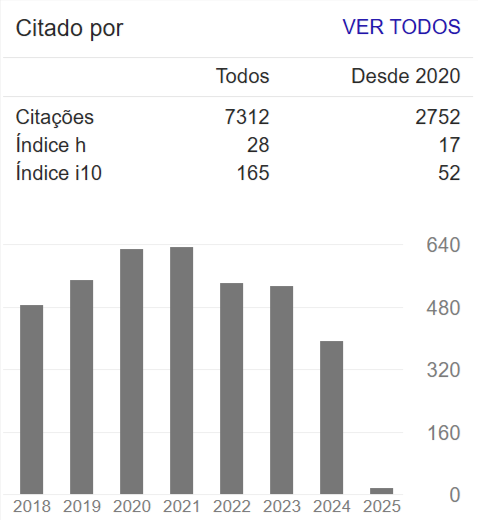Water table response at Bauru Aquifer system (adamantina formation) ac-cording to precipitation and evapotranspiration under diferent land uses
Abstract
Groundwater monitoring is an essential tool for water resources planning since the response of the water table to precipitation events varies according not only to local hydrogeological conditions but also on land use and management. Thus, this study has aim to apply time series models based on groundwater monitoring data for understanding the processes that occur during the hydrological cycle and affect the availability of groundwater resources of the Bauru Aquifer System (BAS), one of the major groundwater sources available in the Médio Paranapanema hydrographical region, São Paulo, Brazil. The result has shown a distinct response between wells located under the same geological formation but with different land uses. It was noted that in the agricultural area the levels were more sensitive to seasonal variations and management practices, denoting local flow cells, while in the forrest conservation area where there is no anthropic perturbations the monitoring data reflect the base flow in direction to the nearest drainage, influenced by the intermediate/regional groundwater flow.

















